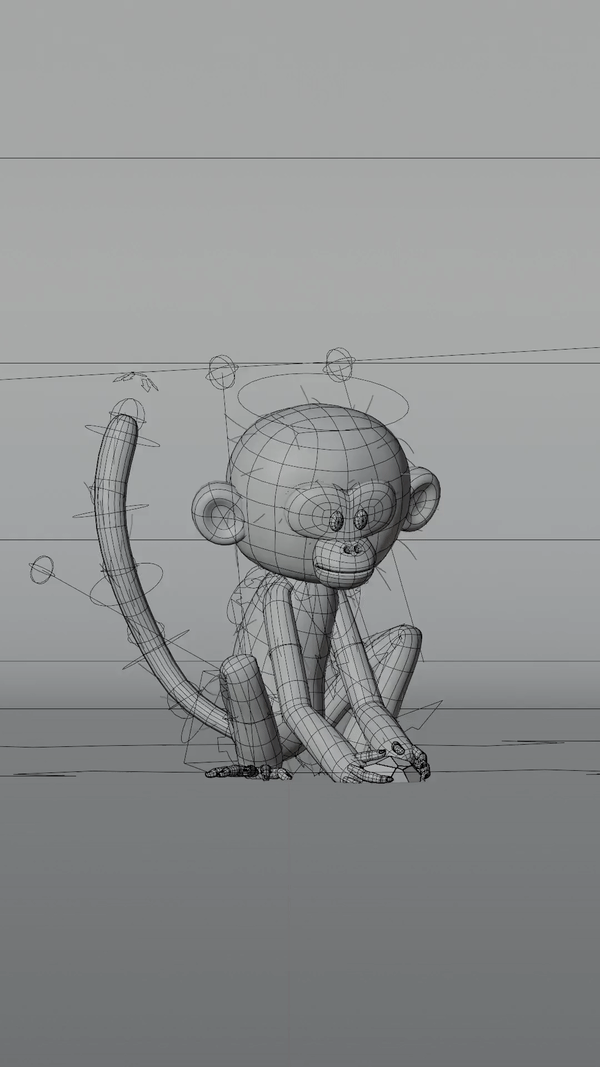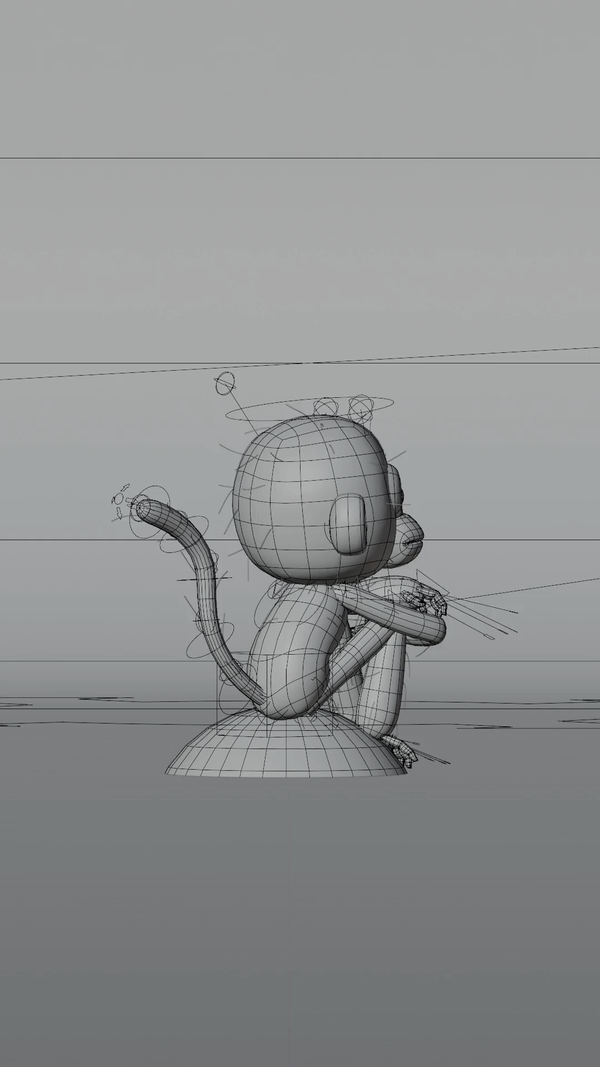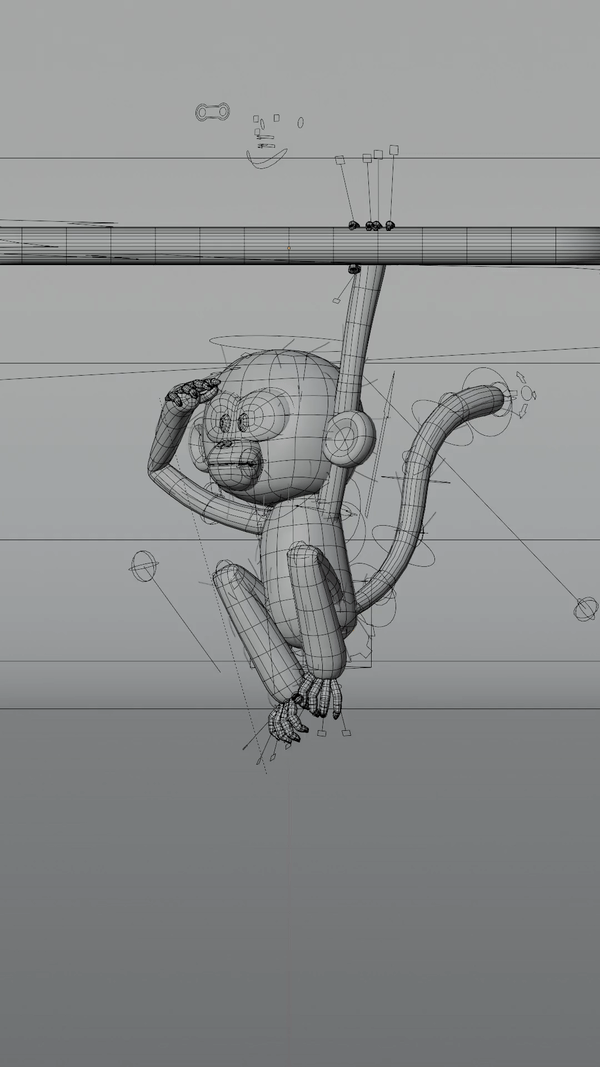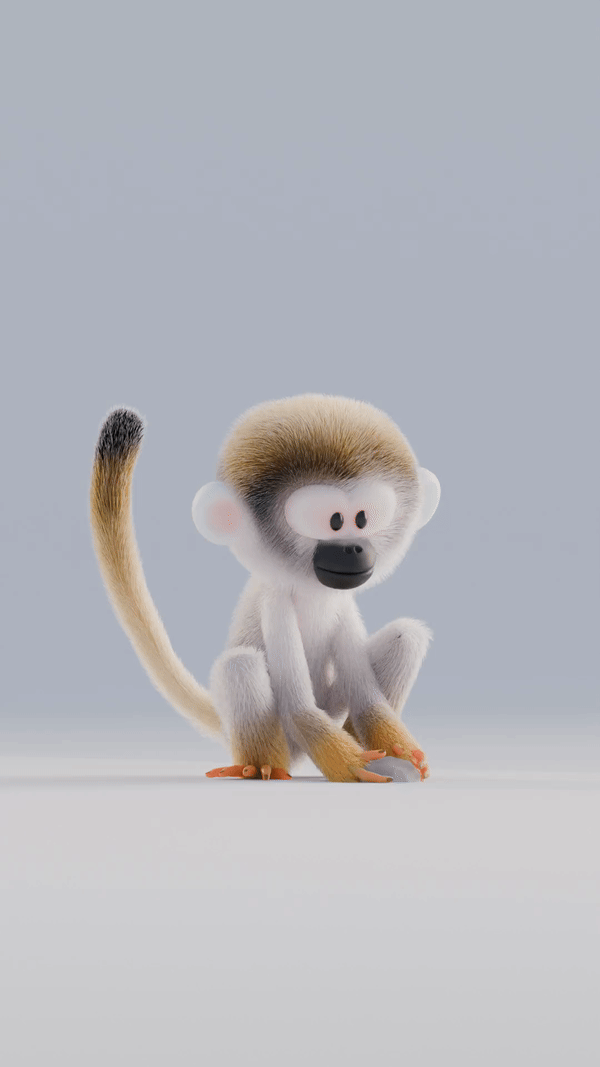New World Monkeys
2024
Personal
“Primates rafted through waif dispersal from Africa by ∼36 Ma” (Bond et al., 2015, as cited in Lynch-Alfaro, 2017).
How did monkeys arrive in the New World?
The prevailing hypothesis, supported by fossil evidence, is that ancestors of New World monkeys
(platyrrhines) came from Africa and crossed the Atlantic on natural rafts of vegetation, reaching South America
during the Eocene — roughly 36 million years ago (Lynch-Alfaro, 2017). The discovery of new primates from the Peruvian
Amazon dating to the Eocene (Bond, Tejedor, Campbell Jr., Chornogubsky, Novo & Goin, 2015) extends the South
American fossil record by about 10 million years, reinforcing this narrative.

The monkeys
Since we don’t have a clear fossil record of those early travelers, I took inspiration from today’s New World
monkeys—capuchins, tamarins, and other small species. I focused on traits like soft fur, long limbs, and goofy,
friendly expressions. The idea was to make them recognizable but not bound to strict accuracy.
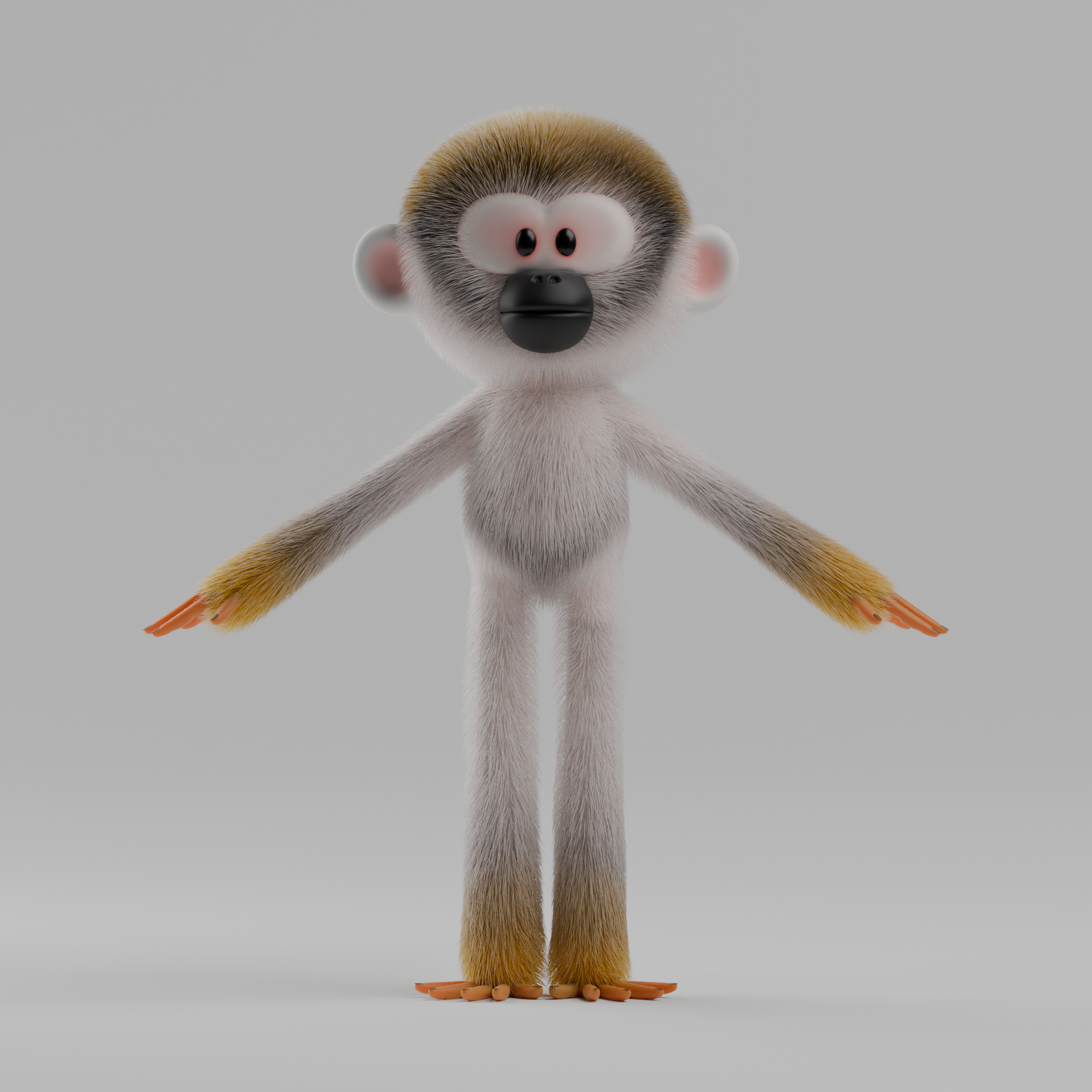
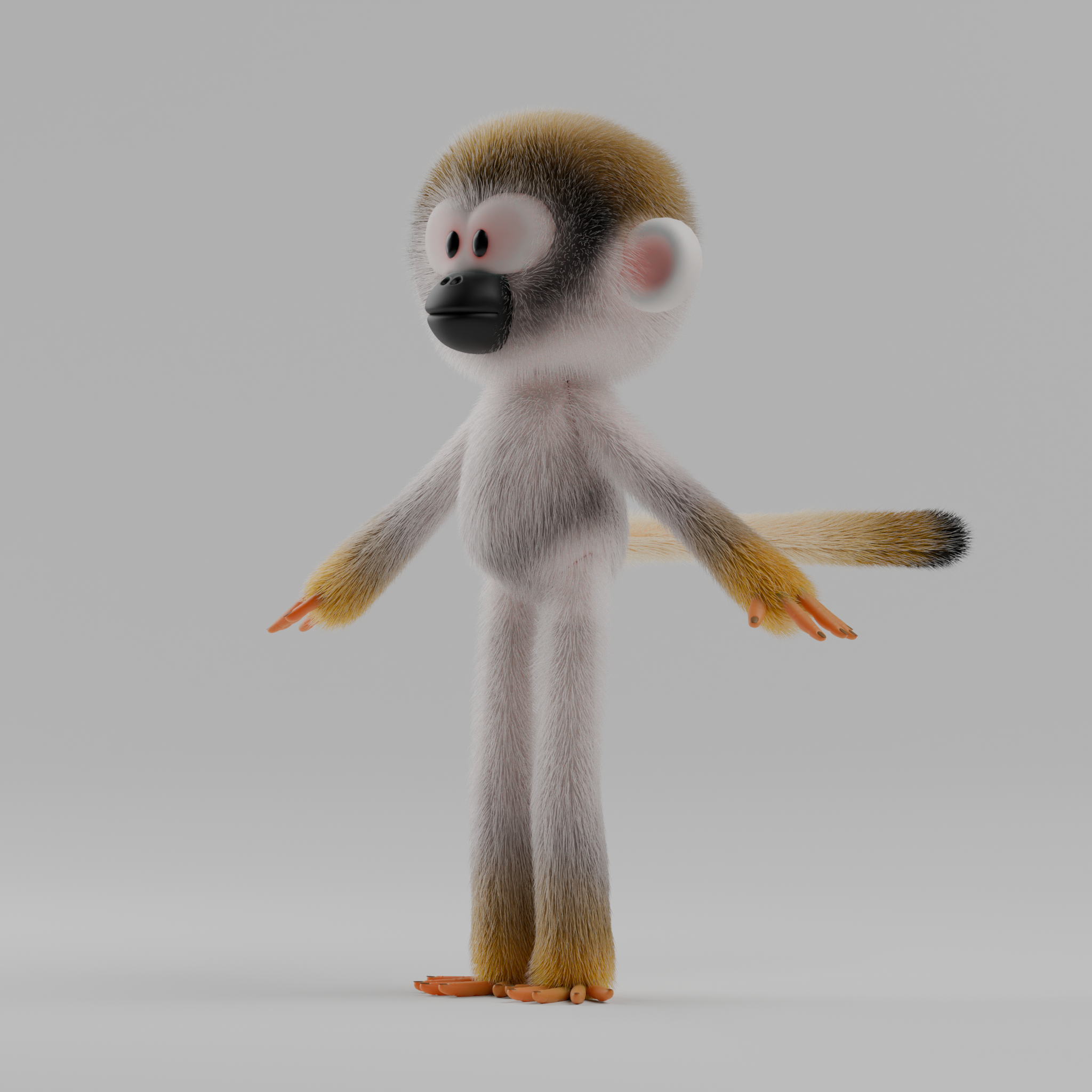
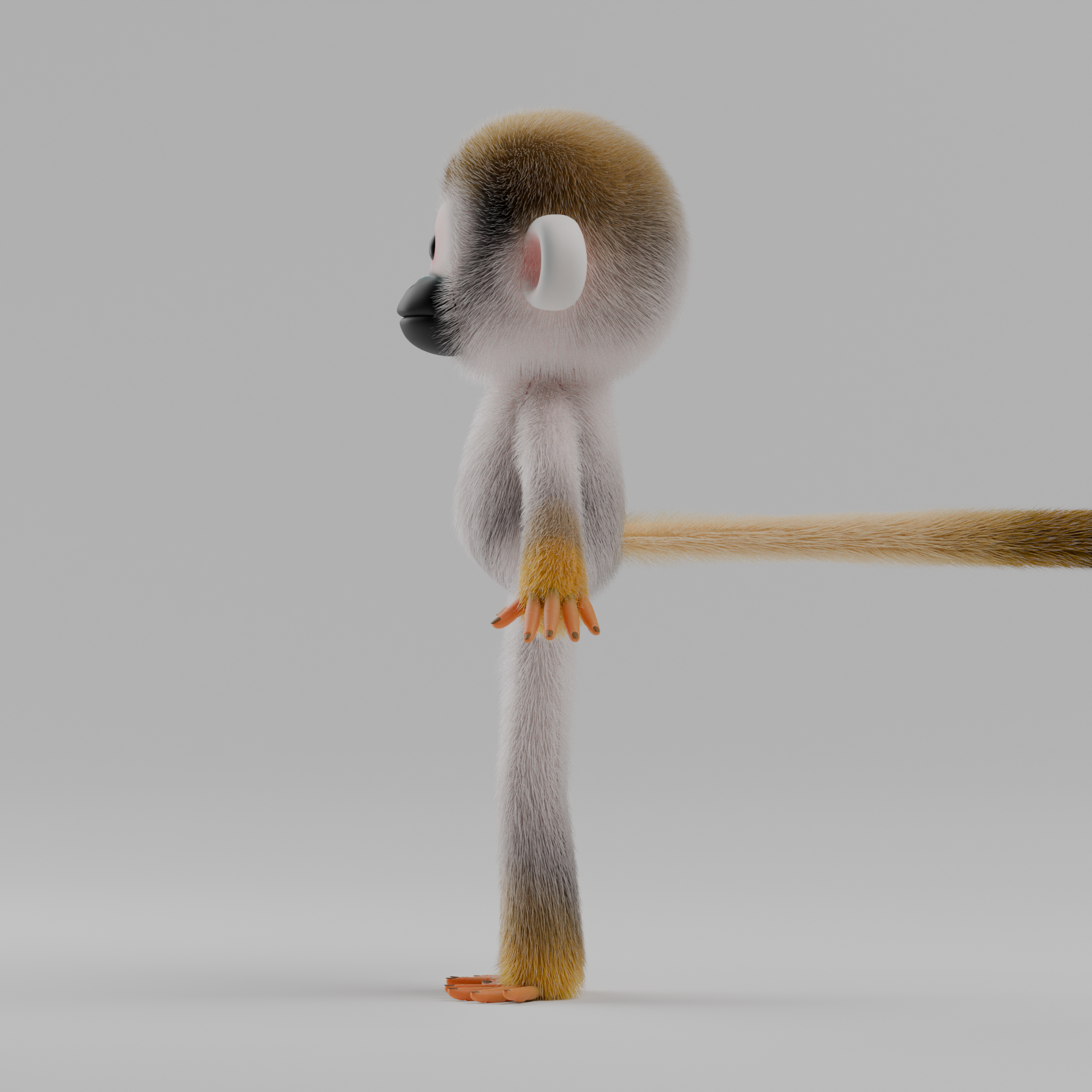
The island
I designed the “raft” as a playful simplification: a spherical chunk of wild grass, flowers, and a couple of
branches sturdy enough for the monkeys to climb on. It’s not a realistic model, but a symbolic stage for this
improbable journey.
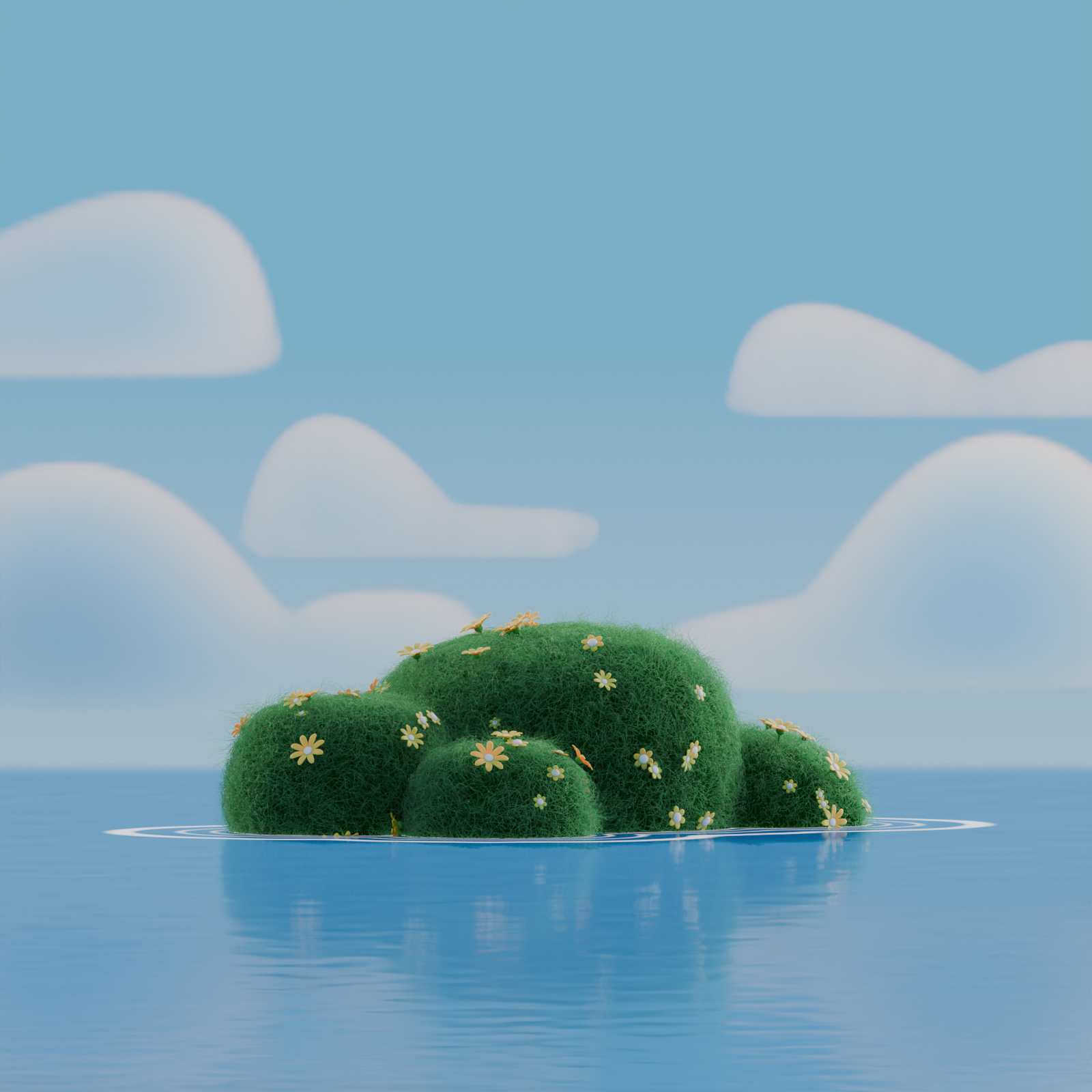
Some early island concepts. Maybe too realistic for what I was aiming for.
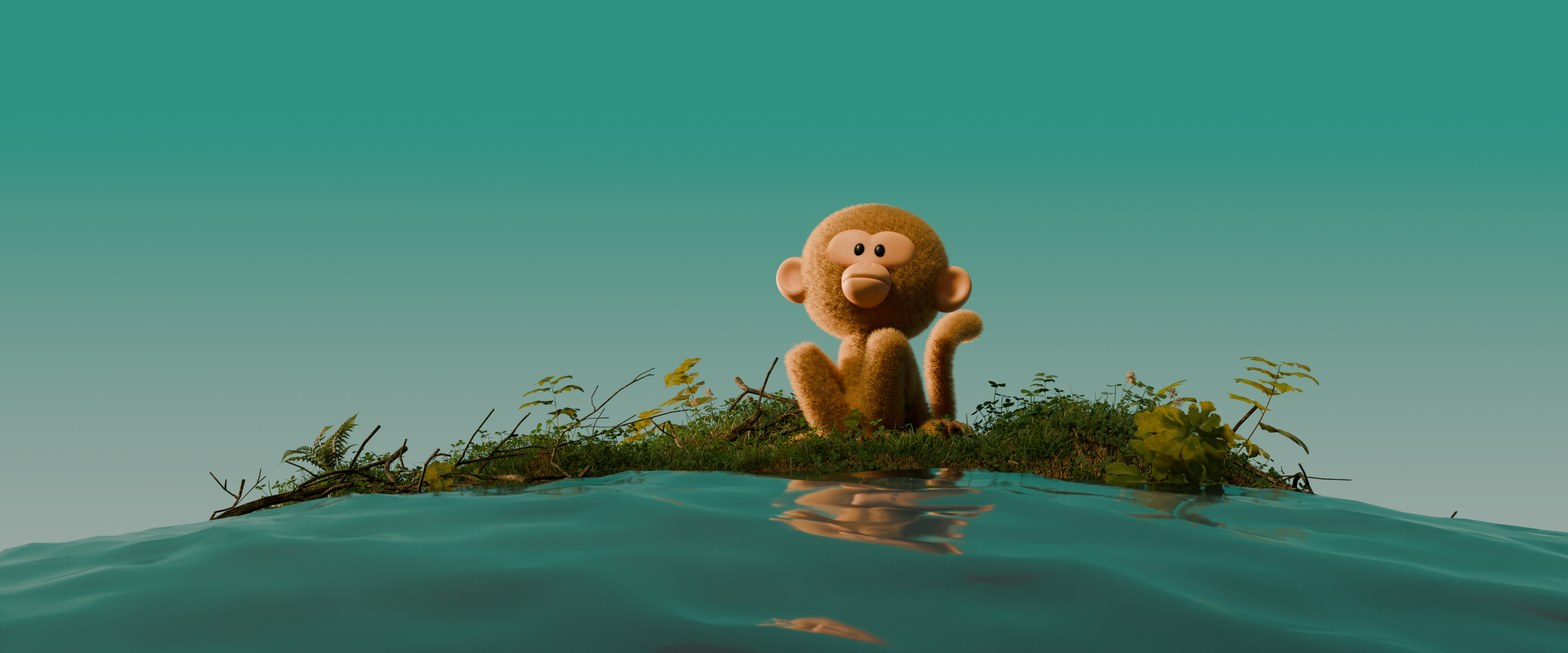
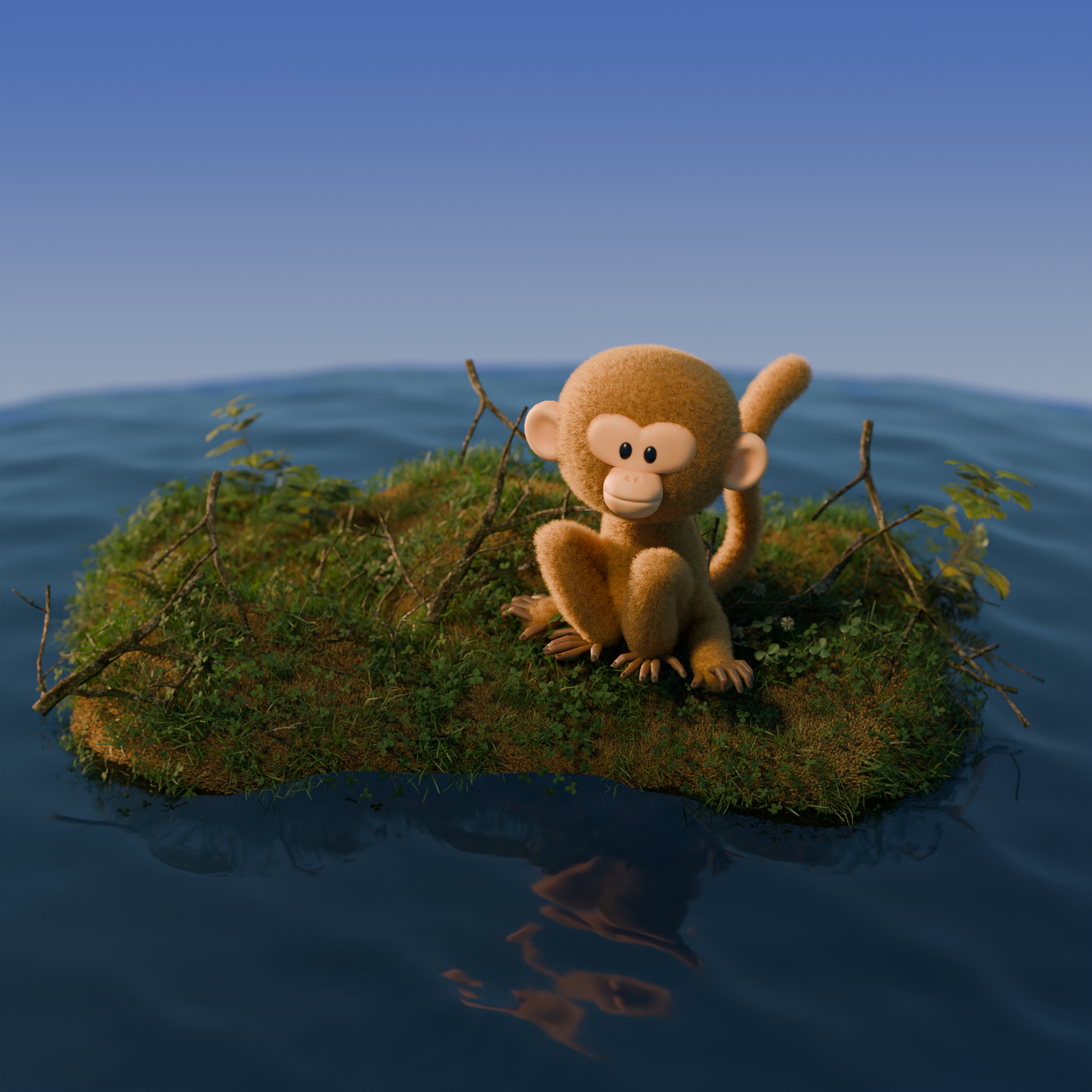
The animation
The humor lies in their ordinariness: drifting across the ocean while doing everyday monkey things. One is
dangling
from a branch, another cracks fruit with a stone, another just scratches idly or stares at the horizon. They
don’t
realize they’re in the middle of an evolutionary odyssey. Well—except for one, who seems suspiciously aware,
scanning the distance for land.
